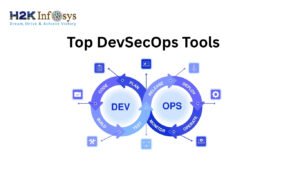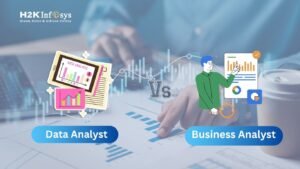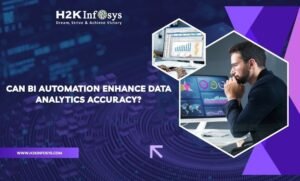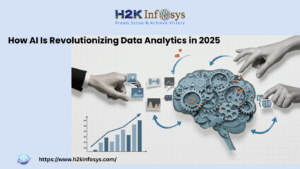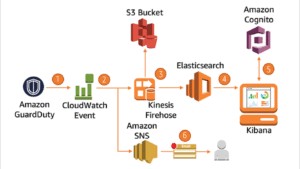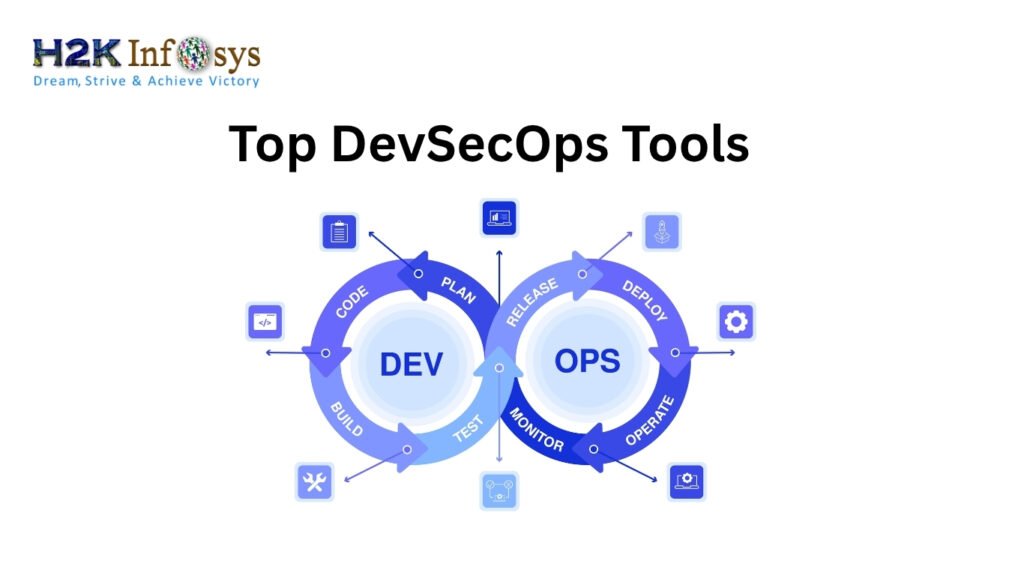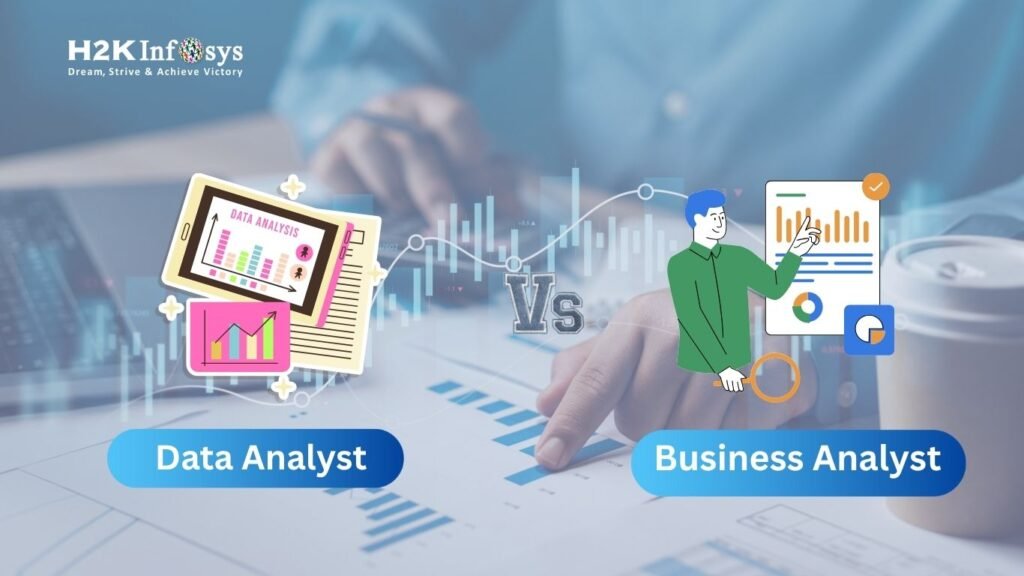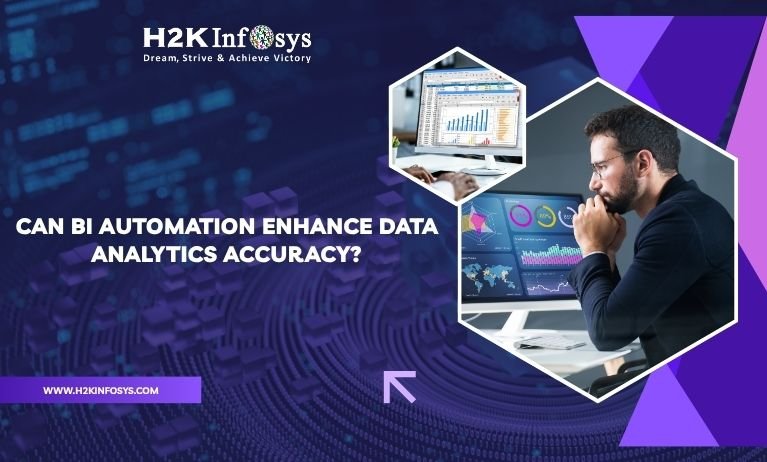Introduction
In today’s data-driven world, businesses rely on actionable insights to make informed decisions. Tableau Developers play a crucial role in helping organizations visualize complex data through interactive dashboards and reports. If you’re looking to build a career in business intelligence, mastering Tableau is an essential step. In this blog, we’ll explore the responsibilities of a Tableau Developer, the growing demand for this profession, and how enrolling in Tableau Developer Training at H2K Infosys can open up exciting career opportunities.
In modern days most businesses are dealing with zettabytes and yottabytes of data generated every day. That means there are many things included in these data, and it can’t be simply dumped; companies use these insights to extract hidden patterns and meaningful insights to optimize the business. However, analyzing this much data and getting insights, hidden patterns are humanly impossible using traditional methods. That is where we require data visualizations and data analysis. These techniques are beneficial to get insights quickly and efficiently. When it comes to data visualization, Tableau is bound to get its place. So, let us understand everything related to Tableau, including the role of a tableau developer.
Who Is a Tableau Developer?
A Tableau Developer is a specialized data professional responsible for designing and creating interactive visualizations that help organizations analyze data trends. They work closely with business analysts, data engineers, and stakeholders to transform raw data into meaningful insights.
Key Responsibilities of a Tableau Developer
- Data Analysis & Visualization: Converting large datasets into easy-to-understand visual representations.
- Dashboard Development: Creating interactive dashboards to present KPIs and trends.
- Data Modeling: Preparing and structuring data for analysis.
- SQL Query Writing: Extracting and transforming data from various sources.
- Performance Optimization: Ensuring that dashboards load quickly and efficiently.
- Collaboration with Stakeholders: Gathering requirements and delivering solutions that meet business needs.
It is a widely used tool for performing data visualization. The main function of Tableau is converting the unstructured or structured data into an easily understandable format. It provides various worksheets and dashboards to make users understand the data easily, efficiently, and quickly. The significant advantage of Tableau is the data blending feature. Data blending is the process of gathering data from different sources and storing all these data in a data warehouse. It also provides other important features such as real-time analysis, working with BI tools, and data cooperation. To make all these actions, users do not need to have technical expertise or knowledge of programming languages. All these user-friendly features are causing the huge demand for the best tableau course on all learning platforms.
The Growing Demand for Tableau Developers
The demand for skilled Tableau Developers has skyrocketed as companies increasingly rely on data analytics to gain a competitive edge. According to a recent LinkedIn Jobs Report, data visualization skills are among the top in-demand skills for 2025.
Industry Statistics
- The Business Intelligence market is expected to grow to $33 billion by 2025 (Gartner).
- Tableau Developers earn an average salary of $85,000 – $120,000 per year (Glassdoor).
- 80% of Fortune 500 companies use Tableau for data visualization and analytics.
With companies actively seeking professionals who can turn raw data into strategic insights, pursuing Tableau training and placement opportunities can be the key to landing a high-paying role.
Types of Tableau Tools
Tableau comes with two types of tools, they are;
Developer Tools
As the name says, these tools are used for development purposes. These tools include tools for creating dashboards, charts, visualizations and provides BI reports to companies. Tableau developer tools are Tableau Public and Tableau Desktop.
Sharing Tools
These tools are used to share. Sharing tools include created charts, visualizations, reports, and dashboards. The products are Tableau online, Tableau reader, and tableau server.
Roles and Responsibilities of Tableau
The major roles and responsibilities of the Tableau developers are as follows.
- Generating visualizations from the data extracted from various sources.
- Identifying the hidden patterns and useful insights from big data sets after analyzing using Tableau.
- Designing different dashboards.
- Managing huge data sets.
- Managing and monitoring Tableau server.
- Improving SQL queries to improve the performance.
- Identifying and examining glitches of the business process and timely resolving the same.
- Finding out the improvement area and identifying automation opportunities to make operation efficient.
- Developing reports and reference documents to get finalized reports.
These are the main responsibilities of a Tableau developer, and you can perform all these tasks once you complete tableau certification.
Tableau Products
Tableau comes with five different products to make data visualization tasks easier and effective. Let us look at those products one by one.
Tableau Desktop
It is the tool used to visualize data acquired through multiple sources of data. In this product, we can create visualization charts, Business Intelligence Reports and generate dashboards. It provides connectivity to the data warehouse to live data. Tableau Desktop comes in two types.
The first one is Tableau Desktop Personal. Under this, you can get private space for working, and the access is restricted here. And the work you created cannot be published online. In the second type, Tableau Desktop Professional, you can publish the work online, and it provides access to the entire data.
Tableau Public
Under this, as the name denotes, it is available to the public, and anyone can access it. Since it is available to everyone, there is no option for isolation. It is ideal for learning purposes to the general audience.
Tableau Server
It is used to share the visualizations created on Tableau Desktop. Once the work is uploaded, it is available only to authorized users. These users can access the files using their credentials.
Tableau Online
It is an online tool to share the work. This uses the worksheets that are yet to be created in Tableau Desktop.
Tableau Reader
It is a free tool to view the visualizations and worksheets. The receiver must need to have Tableau Reader to view the dashboards and other visualizations. These are the products of Tableau, and one can find the usage of all this in the best tableau training.
Skills Required to Become a Successful Tableau Developer
To thrive in this field, aspiring Tableau Developers should master a combination of technical and analytical skills:
Technical Skills
- Tableau Desktop & Server: Understanding Tableau’s functionalities, dashboards, and publishing reports.
- SQL & Databases: Writing SQL Queries to fetch, clean, and transform data.
- Data Blending & Joins: Merging data from multiple sources.
- ETL (Extract, Transform, Load): Processing and preparing raw data for analysis.
- Python or R (Optional): Enhancing analytics capabilities using scripting languages.
Soft Skills
- Problem-Solving: Analyzing business requirements and providing data-driven solutions.
- Attention to Detail: Ensuring accuracy in data visualization.
- Communication Skills: Presenting insights in a clear and engaging manner.
- Business Acumen: Understanding industry-specific data requirements.
Real-World Applications of Tableau
Tableau is widely used across industries, making it a highly valuable skill for professionals. Some common applications include:
1. Retail & E-commerce
- Analyzing sales trends and Customer Behavior.
- Optimizing inventory management through data visualization.
2. Healthcare & Pharma
- Monitoring patient outcomes and treatment effectiveness.
- Visualizing public health trends for research and policy-making.
3. Finance & Banking
- Identifying fraudulent transactions through data pattern analysis.
- Tracking financial performance using KPI dashboards.
4. Marketing & Sales
- Measuring campaign effectiveness through performance metrics.
- Understanding customer segmentation and demographics.
Step-by-Step Guide to Becoming a Tableau Developer
Interested in becoming a Tableau expert? Follow this structured approach:
Step 1: Learn the Basics of Tableau
- Get familiar with Tableau’s interface and functionalities.
- Explore drag-and-drop features for data visualization.
Step 2: Master SQL for Data Extraction
- Learn how to write SQL queries to retrieve and manipulate data.
- Practice joining, filtering, and aggregating datasets.
Step 3: Work on Hands-On Projects
- Build interactive dashboards using real-world datasets.
- Analyze industry-specific case studies.
Step 4: Optimize Dashboards for Performance
- Learn best practices to improve loading speed.
- Reduce data redundancy and optimize calculations.
Step 5: Enroll in a Structured Training Program
- Join Tableau Developer Training at H2K Infosys to gain hands-on experience.
- Get mentorship from industry experts and work on live projects.
Why Choose H2K Infosys for Tableau Developer Training?
H2K Infosys provides a comprehensive Tableau Developer Training program designed to help professionals master data visualization and land high-paying jobs. Our program includes:
1. Industry-Relevant Curriculum
- Covers Tableau Desktop, Server, Prep, and SQL.
- Includes real-world case studies and projects.
2. Hands-On Learning Experience
- Practical exercises with live data.
- One-on-one mentoring sessions with experienced trainers.
3. Placement Assistance
- Resume building and interview preparation.
- Strong connections with top recruiters and hiring managers.
4. Certification & Job Readiness
- Receive a Tableau certification upon course completion.
- Get guidance on Tableau job interviews and salary negotiations.
Key Takeaways
- Tableau Developers play a critical role in data visualization and business intelligence.
- The demand for Tableau skills is growing rapidly across industries.
- Mastering Tableau, SQL, and data visualization can lead to a lucrative career.
- Enrolling in Tableau Developer Training at H2K Infosys provides hands-on experience and placement opportunities.
Conclusion
Ready to start your journey as a Tableau Developer? Join H2K Infosys’ Tableau Training today and gain the skills needed for a successful career in data analytics!










